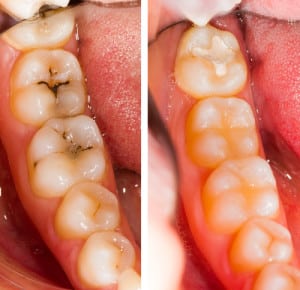 A tooth filling helps to protect cavities that have formed in your teeth due to bacteria and decay. Fillings help to prevent the bacteria from causing further decay around your mouth. Dentists are able to use several different types of material in order to achieve this – gold, porcelain, composite resin, and amalgam are all materials that can be used. Porcelain or composite resin are both materials that closely resemble the natural color of the tooth. Determining what material is right for you will be a conversation that you have with your dentist. Can fillings harm your mouth?
A tooth filling helps to protect cavities that have formed in your teeth due to bacteria and decay. Fillings help to prevent the bacteria from causing further decay around your mouth. Dentists are able to use several different types of material in order to achieve this – gold, porcelain, composite resin, and amalgam are all materials that can be used. Porcelain or composite resin are both materials that closely resemble the natural color of the tooth. Determining what material is right for you will be a conversation that you have with your dentist. Can fillings harm your mouth?
How Does It Work?
If you are feeling any tooth sensitivity or pain in any of your teeth – it’s time to visit your dentist. You could have a cavity that needs attention before the decay gets any worse.
Once your dentist has evaluated your cavity, they will clean out the affected area to make sure you are bacteria free. If your cavity is not properly cleaned, the filling could harm your tooth and the surrounding teeth according to a recent British study. This is why the hole is typically made larger, to ensure that all bacteria is removed.
Once the hole is thoroughly cleaned, your dentist will apply the filling material over the hole to repair your tooth. If too much of your tooth is affected or fractured, your dentist may recommend a dental crown instead of a filling.
What Are The Differences Of The Materials?
Each material has their own benefits, it’s up to you and your dentist what will work best for your situation. For example; gold has been known to last for longer than 20 years, amalgam is extremely resistant and inexpensive, composite resin is practically identical to the color of your teeth, and porcelain is able to resist stains.
